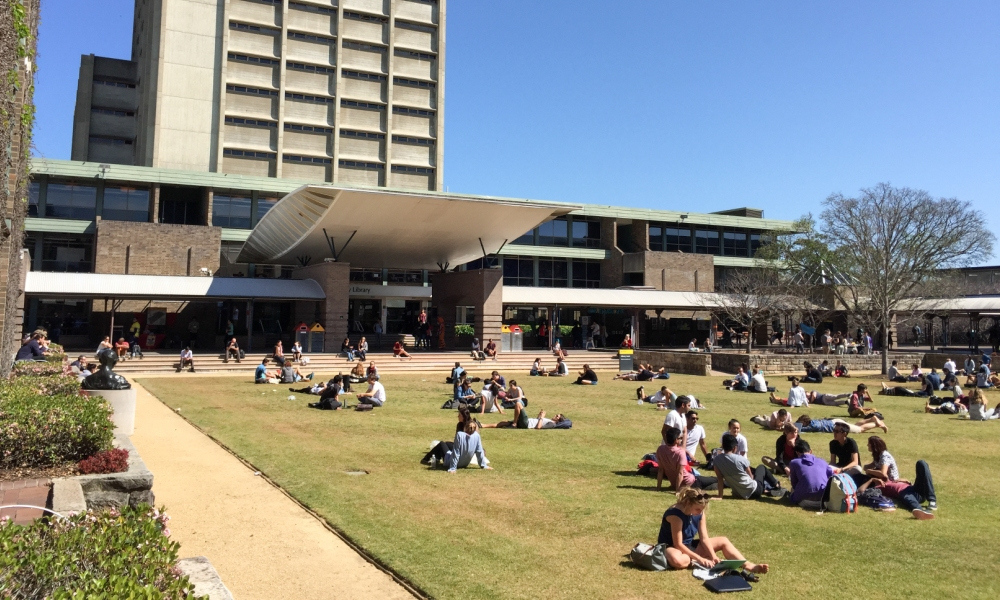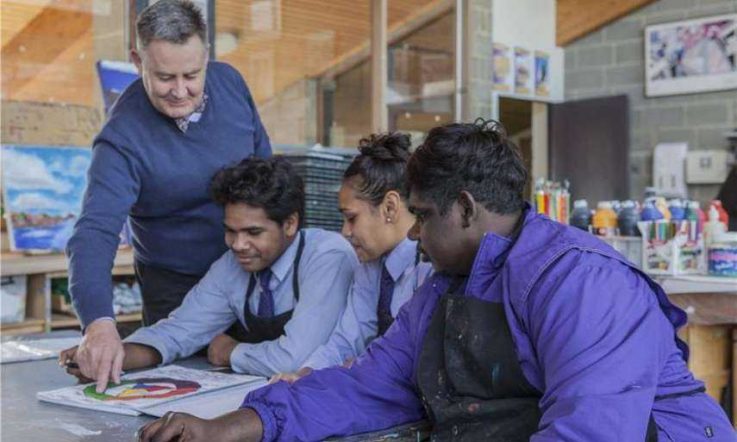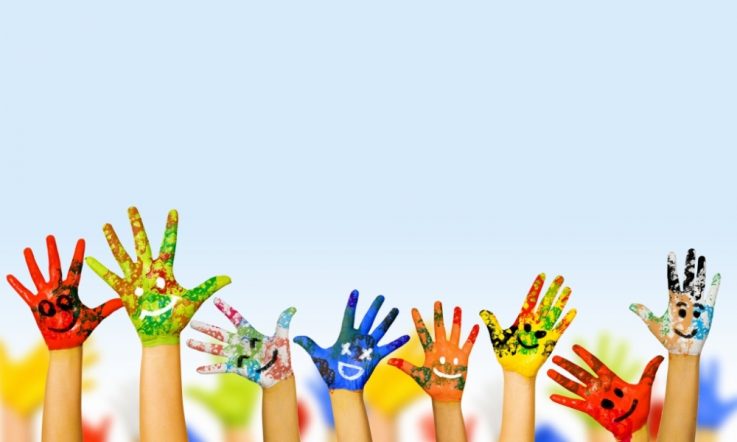This podcast series from Teacher magazine is supported by SSO – Subject Selection Online. One easy platform for your subject selections. Let SSO handle the checks and challenges for you; extracting pristine data to upload into your timetabling software. Try SSO today at subjectselectiononline.com.au
Thank you for downloading this podcast from Teacher magazine – I'm Jo Earp. A new Australian study by a team of academics from the University of Newcastle and Western Sydney University investigates the occupational and educational aspirations of Indigenous school students. The findings have been published in the Australian Journal of Education, and lead author Professor Jenny Gore is my guest today in this episode of The Research Files.
Jo Earp: Professor Jenny Gore, welcome to The Research Files. Now, your research paper with colleagues in the Australian Journal of Education, that investigates the career and educational aspirations of Indigenous students. Who was involved in this study?
Jenny Gore: The study was looking at school students in New South Wales Government schools (about 64 schools across the state) and we had 6400+ students involved in the study over a four year period between 2012 and 2015.
JE: So, this is a longitudinal study. Where does this sit in terms of the previous research? This one, for example, I notice includes primary school-age data doesn't it?
JG: Yes, all of the research we've been doing on aspirations since the beginning of 2012 was with students in primary and high school. And, in fact, the longitudinal design was such that we had students in Years 3, 5, 7 and 9 at the beginning of the study, in the first year, and so at the very end of the study they were in [Years] 6, 8, 10 and 12. So, effectively, over the course of the four years we have students in every year of schooling from Year 3 to Year 12.
JE: As I mentioned there, it investigates career and educational aspirations of Indigenous students (this particular paper that you've published). What did you ask the students?
JG: Two fairly simple questions really. For the primary school students, they were asked what they wanted to be when they grew up, which is a common question that kids are asked by parents and grandparents and family friends. Then, for the secondary students – mindful that many of them don't necessarily go straight into a particular job … some take gap years, some do a TAFE course or something first, others go straight into university and so on – we asked them what kind of work they'd like to be doing when they were 25-years-old. So, just a little bit beyond the end of, perhaps, doing an undergraduate degree. That was how we got at occupational aspirations.
In terms of educational aspirations, we just asked them what was the highest level of education they planned to complete. For primary school students it was a narrower set of choices: ‘high school', ‘TAFE', ‘university' and ‘I don't know'; for the secondary students it was a little bit more detailed in terms of postgraduate study and things as well, but we collapsed it into those four key categories for this particular analysis.
JE: So, an awful lot of data there to analyse. What were some of the key findings? There's some really interesting stuff coming out of this isn't there around ‘aspiration' I suppose, that word.
JG: Yes, I mean, everything needs to be problematised in a way – it's tricky to do this kind of research methodologically, and every construct can be examined ‘what do we mean by aspirations?' and so on. But, for this particular analysis we looked at the 432 Indigenous students we had in the sample and those students generated over 660 surveys, so we were comparing the Indigenous students' survey responses with the non-Indigenous student survey responses in particular.
What we found first of all that I think was interesting was that the aspirations of Indigenous and non-Indigenous students were very similar when it came to occupational interests. We had students, both of those demographic groups wanting to be, for instance, (among the boys) sports and fitness workers and defence force members, [they] were the top two categories of interest, whether it was Indigenous or non-Indigenous students. Among the girls, arts professional or school teacher were the top two choices for Indigenous and non-Indigenous girls.
What we found, in fact, was that the gender was a much bigger determinant of occupational interest than was Indigeneity. There were a few categories within the top 10 most popular occupations that differed for Indigenous and non-Indigenous students, but there was way more overlap than there was difference.
JE: And, in terms of the aspirations, or I think you termed it as ‘desire' to go to university – what did you find there?
JG: Yes, this was, I think, the most striking finding from the analysis. What I was just talking about was occupational aspirations. When it came to education, meaning did they plan to, for instance, go onto university, we looked at a number of variables and one of them was prior achievement using NAPLAN data.
What we found was that in the three [lower] NAPLAN quartiles, Indigenous and non-Indigenous students planned to go to university at roughly the same rate. But when it came to the highest achievement quartile, if you like the students who have the greatest possibility of easily making it into university, there was a really stark difference between Indigenous and non-Indigenous students. It was 73 per cent, I think, of the non-Indigenous students in the highest quartile planned to go to university, but only 42 per cent of highest achieving Indigenous students. What we talk about a bit in the paper is that while university was possible for these students, it was less desirable among the Indigenous high-achieving students. That's, I think, a pretty important finding and has implications both for people in schools but also for people in universities who are trying to encourage Indigenous students to consider university education as a pathway following school.
JE: You mentioned there about the implications, I'm thinking really it's that language. There's a lot of discussion around ‘aspiration' and ‘desirability' never really seems to come into the discussion, or it hasn't … presumably it will do after your findings.
JG: People certainly have talked about these kinds of issues before, you know, should everybody aspire to go to university? It's not the be-all and end-all that's for sure, and those of us who spend our lives in universities know that there's more to life. So, it's not about wanting to suggest that everybody should aspire to university.
But I think that issue of desirability among Indigenous students just signals how different it is for many, not all of course, but for many Indigenous kids to imagine themselves at university and imagine their futures. And I think there are clear issues around a different experience based on race that Indigenous students have in schooling and as they think about higher education. There are fewer Indigenous students in higher ed, even though they have been gains in recent years in terms of the number of Indigenous people coming into universities. And so, to imagine yourself there means taking a risk in a way that is perhaps very different for non-Indigenous students – a risk in terms of being fairly isolated, a risk in terms of distancing yourself from your own family and community.
So, I think it's really important to explore what's going on there and how universities might have to change a little bit to better support those students who have enormous potential to succeed in university, but just don't see that it's perhaps the right place for them. Universities have for many years, in most cases, done a wonderful job of setting up support units within universities for Indigenous students. At Newcastle, for instance, we have the Wollotuka Institute – which offers a really wonderful space for Indigenous staff and students to gather and to do important work, both in terms of teaching and research, but also in terms of providing institutional leadership and guidance, and really providing a home as well for Indigenous people. But, despite that, that's a kind of almost an enclave, a safe haven, it's the rest of the institution that needs to, perhaps, be a bit more accommodating for the specific experiences that Indigenous students face at university.
I think when it comes to school, and schooling, we also need to think about how we can better support students who have that potential to go to university, if that's what they want to do. From some of the other research that we're doing, we have the sense that teachers actually underestimate their influence. You know, the small words that a teacher says in passing sometimes about ‘you'd be great at …', or ‘I don't think that's suitable for you …,' or ‘I can't wait to see your brilliant career unfold in (this particular) area …'. Or, whatever, but those little, sometimes almost throwaway, lines from teachers can have profound influence on students and what they think is possible and how they see themselves. And so, I think if there's anything that we would suggest teachers need to do, I think they do need to be very mindful of the messages they convey to students about what's possible.
I think teachers would also benefit from having access to some of the key concepts in the literature on aspirations. There's the idea of the ‘capacity to aspire' for instance, which says that people have different capacity to aspire that's linked with social capital and cultural capital that is accessible to them; so, not just Indigenous students but, for example, first-in-family students don't have access to the same stock of knowledge about what it means to go to university as students whose, perhaps, parents already have a university degree and have that experience. So, helping teachers to understand some of those concepts I think is a second way in which teachers might play a role.
Then, a third one I think is really to help teachers to develop a bit more knowledge about contemporary higher education, information and options and pathways. I think that many of us who became teachers, things were a bit different perhaps in higher education when we trained to be teachers. Just understanding how the student loans system works – understanding that students don't have to put up a whole lot of upfront money in order to study, and so on. It's important that teachers have accurate information so that when students ask them about or talk about ‘I couldn't go to university … ', perhaps there's the option then for teachers to say ‘well, actually, did you know that although of course it will take some money to be able to afford the text books and all the other things, there are options that can really support people with less economic resources to make it to university.'
JE: Just finally then, you and your colleagues have done quite a bit of research around student career choices – and we've reported on those findings previously in Teacher magazine [When I grow up; Infographic: Students and career aspirations]. In those previous studies you've pointed out that most careers education here in Australia is delivered in secondary school, roughly Year 10 for most. But your research shows students are fairly clear, well they're very clear about their aspirations and the possible careers that they might want to go into much earlier than that. Is that something you'd be advocating, more of a shift in when we introduce careers ed?
JG: I think we really have to be cautious about pushing kids into making choices too early, as well … It's not so much that kids make clear choices early on, but [Linda Gottfredson], who's a well-known theorist in this space, she talked about how kids circumscribe and compromise as they consider careers that might be possible for them. And so, what happens I think is that kids at quite a young age can start to say ‘well, that kind of job is impossible for me …', and it can happen in both directions. There are students who live in some of the very wealthy suburbs where we've studied their aspirations who can't imagine not going to university and who can't imagine being anything other than a doctor or a lawyer, because that's what people in their world and their community are engaged in. At the other end though you've got kids perhaps who come from less-advantaged backgrounds who very early on say ‘well, people like us don't go to university …', ‘people like us can't do those kinds of work'.
So, rather than necessarily move careers education into primary schools (if it was in primary schools it would have to look quite different) it's about keeping options open for kids and helping them to see the range of careers that are out there, and helping them understand what kinds of educational pathways you need to pursue in order to get to certain career futures. Because, one of the other things we've discovered in the research, not so much published yet, is that there's a fair bit of misalignment between students' university aspirations and their educational aspirations. So that we have students who want to be hairdressers but want to go to university and we have students who want to be surgeons but think they will achieve that by going to TAFE.
So, there's room for students to be better informed about the whole education pathway and journey. Mostly in school, kids know in primary school that there's this thing called ‘high school' and kids in high school eventually come to learn something about TAFE and university, but there's a lot of detail that they just don't have access to. That's where I think teachers, and universities, can provide better support.
JE: Broadening those horizons and keeping options open, and helping them make informed choices I guess. Well, it's been fascinating speaking to you today. Thanks ever so much for sharing your work with The Research Files.
JG: Absolute pleasure, thanks Jo.
That's all for this episode – to keep listening or to download all of our podcasts for free visit acer.ac/teacheritunes or www.soundcloud.com/teacher-ACER. You can also check out the full transcript of this podcast and related reading at www.teachermagazine.com.au where, of course, you can also access the latest articles, videos and infographics.
This podcast series from Teacher magazine is supported by SSO – Subject Selection Online. One easy platform for your subject selections. Let SSO handle the checks and challenges for you; extracting pristine data to upload into your timetabling software. Try SSO today at subjectselectiononline.com.au
References
Gore, J., Patfield, S., Holmes, K., Smith, M., Lloyd, A., Gruppetta, M., ... & Fray, L. (2017). When higher education is possible but not desirable: Widening participation and the aspirations of Australian Indigenous school students. Australian Journal of Education, DOI: 10.1177/0004944117710841. http://journals.sagepub.com/doi/full/10.1177/0004944117710841
Related reading
Gore, J., Barron, R. J., Holmes, K., & Smith, M. (2016). Who says we are not attracting the best and brightest? Teacher selection and the aspirations of Australian school students. The Australian Educational Researcher, 43(5), 527-549.
Gore, J., Holmes, K., Smith, M., Fray, L., McElduff, P., Weaver, N., & Wallington, C. (2017). Unpacking the career aspirations of Australian school students: towards an evidence base for university equity initiatives in schools. Higher Education Research & Development, 1-18.
Gore, J., Patfield, S., Fray, L., Holmes, K., Gruppetta, M., Lloyd, A., ... & Heath, T. (2017). The participation of Australian Indigenous students in higher education: a scoping review of empirical research, 2000–2016. The Australian Educational Researcher, 44(3), 323-355.
Holmes, K., Gore, J., Smith, M., & Lloyd, A. (2017). An Integrated Analysis of School Students' Aspirations for STEM Careers: Which Student and School Factors Are Most Predictive? International Journal of Science and Mathematics Education, 1-21.
The full paper mentioned in this episode of The Research Files – When higher education is possible but not desirable: Widening participation and the aspirations of Australian Indigenous school students – is free to access in the Australian Journal of Education for one month.
In this interview, Jenny Gore mentions how comments from teachers around study and careers can have a profound influence on students. Think about your own experience:
What messages are you conveying to students about future education and occupation possibilities?
Are students at your school introduced to a wide range of careers options?
Do you discuss the educational pathways students can pursue to reach certain career goals?



